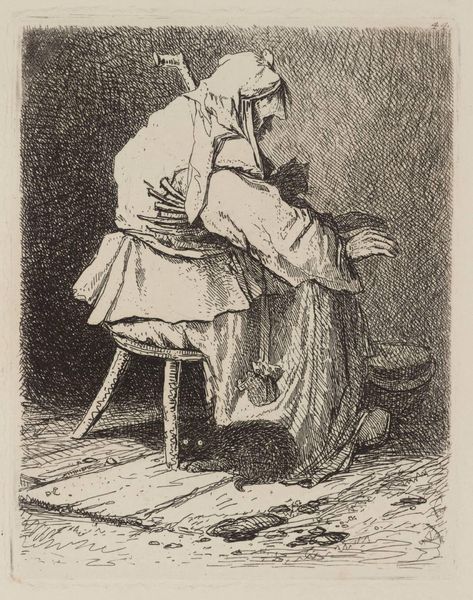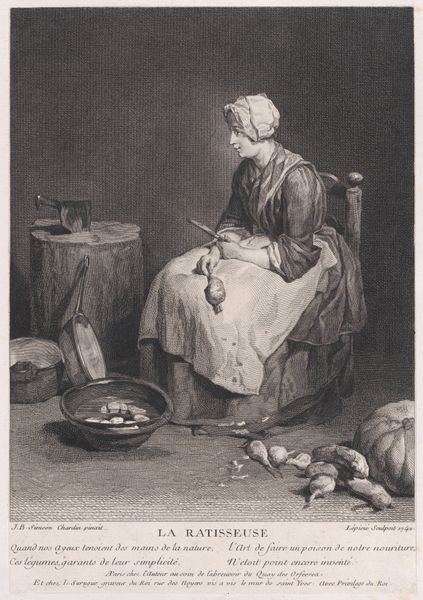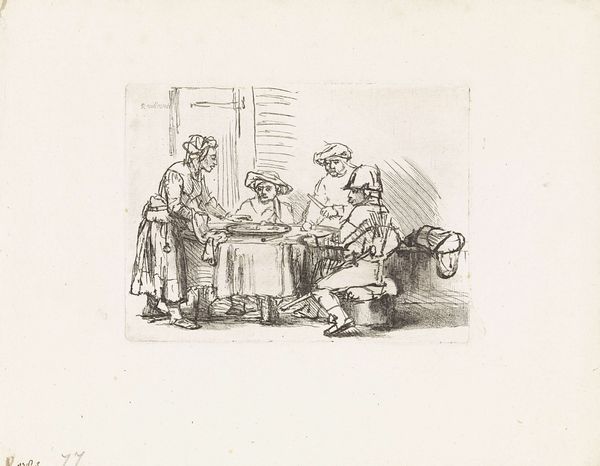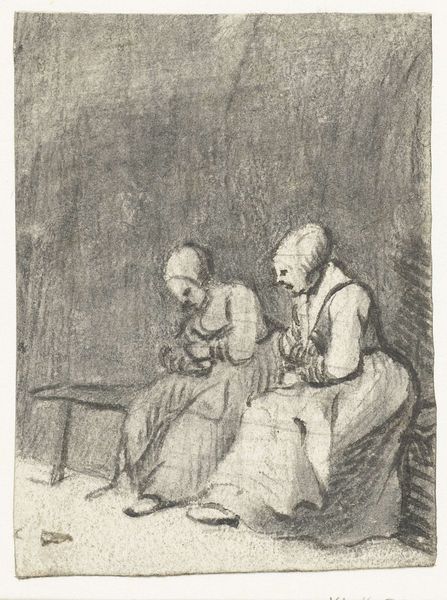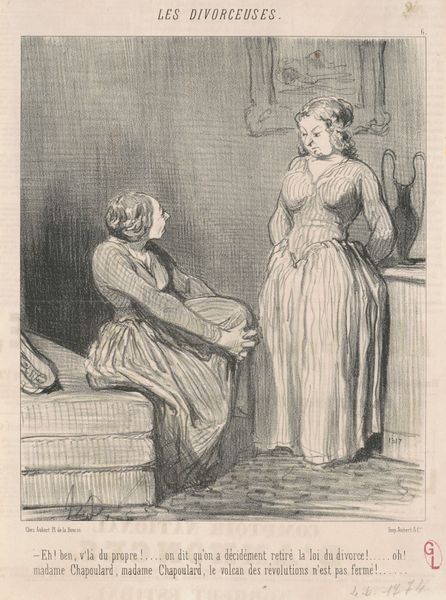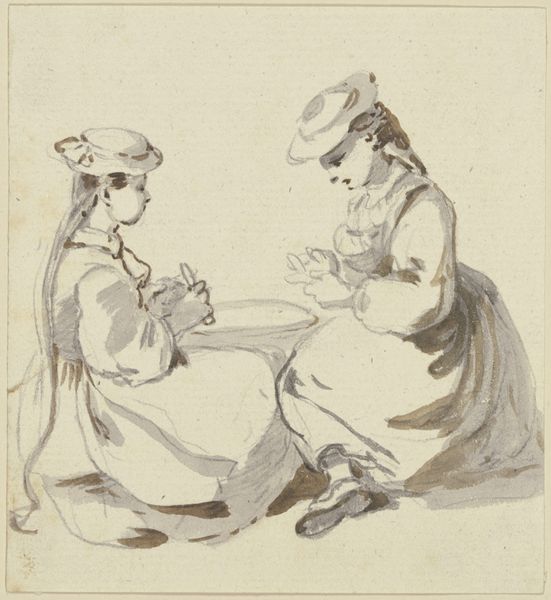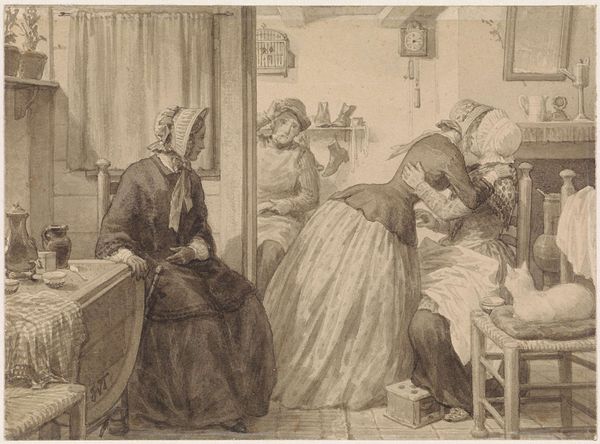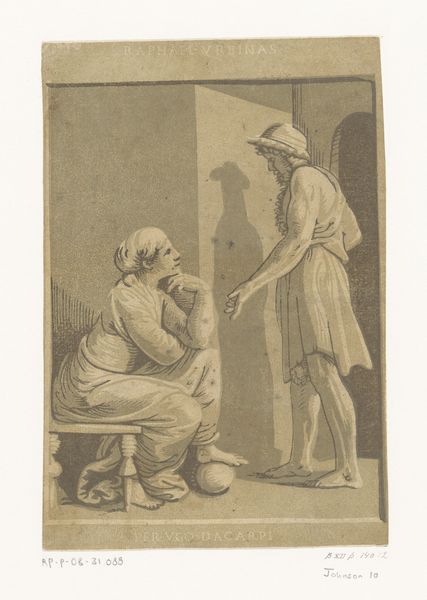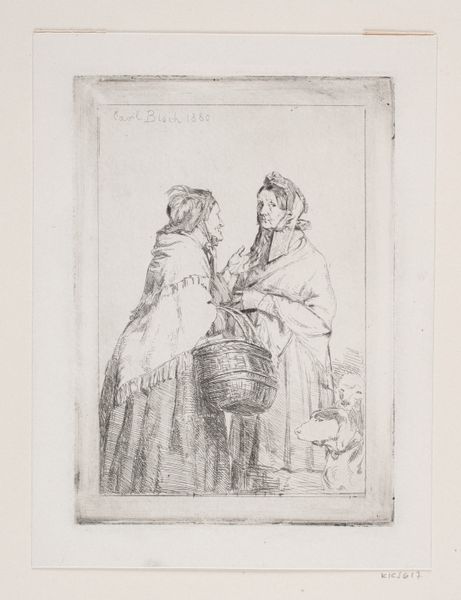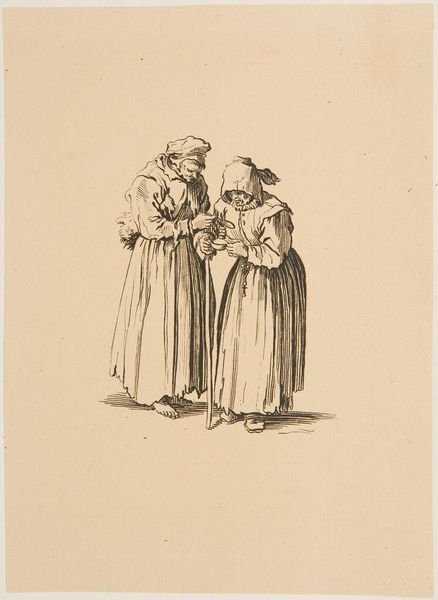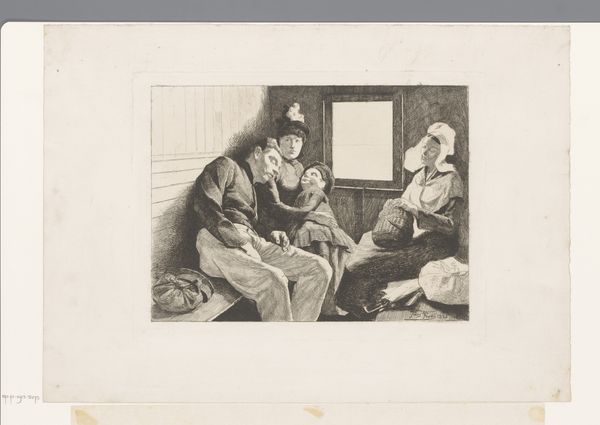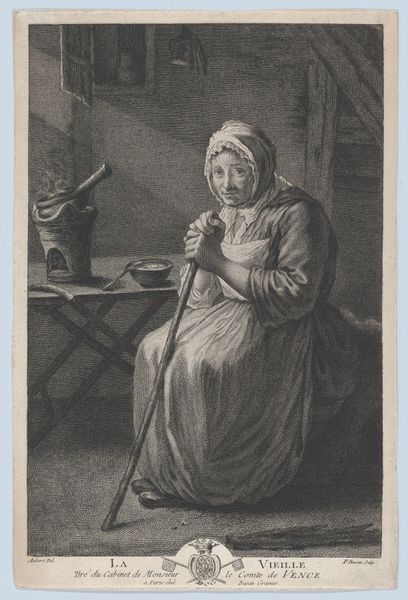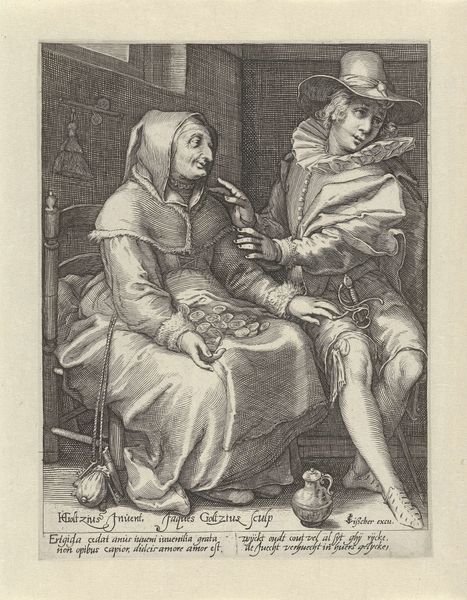
drawing, print
#
portrait
#
pencil drawn
#
drawing
# print
#
figuration
#
line
#
genre-painting
#
rococo
Dimensions: image: 8 15/16 x 7 1/16 in. (22.7 x 17.9 cm) sheet: 9 3/8 x 7 1/16 in. (23.8 x 18 cm)
Copyright: Public Domain
Curator: Here we have "Pea Shellers," a print realized around 1737 by Anne Claude Philippe Caylus. Currently, this piece resides at the Metropolitan Museum of Art in New York. Editor: There’s a hushed quality to it. The monochromatic lines render a scene almost suspended in time; the texture appears surprisingly smooth, almost like polished stone. It's remarkably simple in its composition. Curator: It certainly possesses an intimacy. We observe two women engrossed in their work. Notice how the visual elements speak to the roles within this intimate setting, almost suggesting the transmission of knowledge across generations. It reflects the cultural memory embedded within everyday activities. Editor: The way the artist renders light and shadow is compelling. See how the hatching defines the forms. Also, the artist sets a focal point with a clear articulation of detail towards the front and the upper right, allowing more general articulation elsewhere to bring that detail to the forefront. The stark cubic structure provides a grounding anchor to the more organic forms. Curator: Precisely! Consider the symbolic implications of the peas themselves— a motif of nourishment, perhaps also reflective of shared labor and the bonds between people. This intimate act reflects how cultural continuity is woven into mundane aspects of life. The artist invites reflection upon the significance of daily practice. Editor: Do you think it reveals more of a Rococo taste of its time or a Neoclassical desire for clarity? There is an unusual restraint. Perhaps the linear, somewhat simplified rendering makes it appear to transcend these distinctions. It certainly captures the moment with such delicacy. Curator: Ultimately, the piece invites a reevaluation of what we consider significant. Through this representation of commonplace actions, Caylus transforms labor into something almost sacred, showcasing its inherent worth within culture. Editor: The longer I look, the more compelling the surface becomes. It’s an unpretentious testament to the potential of simple lines to evoke so much depth and emotion. It offers so much clarity through visual design and line.
Comments
No comments
Be the first to comment and join the conversation on the ultimate creative platform.
